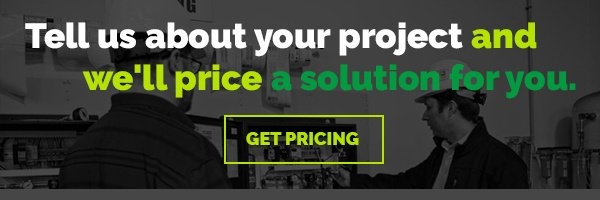Corrosion in the fire protection industry has raised concerns in recent years. Corrosion in fire sprinkler systems can cause system failure/malfunction, facility downtime, and occupational hazards. Until nitrogen-based inerting strategies were introduced, there were several products that claimed to control corrosion - but zero products to eliminate corrosion in fire sprinkler systems. Now, ECS nitrogen generators have set the new standard by effectively stopping corrosion in its tracks.
But what is a nitrogen generator?
What a Nitrogen Generator Does
An economical way of providing a reliable source of nitrogen is with the use of a nitrogen generator. A nitrogen generator makes 98% nitrogen by taking compressed air that is 78% nitrogen, 21% oxygen and other trace gases and separating it. ECS nitrogen generators achieve this by using membrane technology.
A nitrogen membrane separator contains thousands of hollow fibers constructed of a porous membrane material. This membrane material can take a feed stream of compressed air and separate nitrogen from other gases such as oxygen, carbon dioxide, and water vapor based on molecular size.
Why Use Nitrogen
Using nitrogen as the source of supervisory gas in a dry pipe or pre-action fire sprinkler system eliminates corrosion due to the lack of oxygen to support the corrosion reaction. The use of nitrogen as a supervisory gas has been approved by NFPA 13 (Section 7.2.6.1) and FM Global Data Sheet 2-1: Corrosion in Automatic Sprinkler Systems (Section 3.2, April 2018).
Nitrogen Generators Vs. Legacy Air Compressors
A nitrogen generator eliminates corrosion in a dry or pre-action fire sprinkler system compared to using an air compressor as the source of supervisory gas.
Compressed Gas
Every dry pipe fire sprinkler system requires compressed gas to function. The compressed gas serves two purposes. First, it provides the necessary force to keep the water held back at the dry valve. Second, it provides verification of the integrity of the pipe network. Traditionally this compressed gas has been supplied by an air compressor and regulated by the Air Maintenance Device (AMD).
NFPA Standards
NFPA 13: Standard for the Installation of Sprinkler Systems regulates the requirements by which an air compressor serving a dry or pre-action fire sprinkler system must perform. Previous editions of NFPA 13 as well as the current 2016 edition require that the compressed air supply shall be from a source available at all times (Section 7.2.6.3.1, 2016) and the air supply shall have a capacity capable of restoring normal air pressure within 30 minutes (Section 7.2.6.3.2, 2016) or 60 minutes in refrigerated spaces maintained below 5⁰F (Section 7.2.6.3.3, 2016).
Corrosion
From a corrosion standpoint there is a systemic issue with using air compressors as a source of supervisory gas: they continually provide a source of oxygen to the system that will sustain the corrosion reaction.
As leaks develop, the air compressor runs more frequently to maintain the required supervisory pressure which results in more oxygen being introduced to the pipe network. This additional oxygen increases the amount of corrosion taking place and accelerates the leak frequency of the sprinkler system. Replacing compressed air with nitrogen will break the corrosion cycle and prevent leaks from occurring.
ECS Nitrogen Generators
Origins
In September of 2008, ECS filed a Patent Application for the use of a nitrogen generator and a vent to inert dry and preaction fire sprinkler systems. The following day Jeff Kochelek, now the CEO of ECS, presented the concept of using a nitrogen generator as the source of supervisory gas for dry and preaction systems to the NFPA 909 cultural resources committee.
By using a nitrogen generator in conjunction with a vent to purge the pipe network of the corrosive oxygen gas, corrosion in the system could be effectively stopped. Immediately, ECS launched a nitrogen-based corrosion control system and began to sell a line of nitrogen generators for fire protection.
Benefits
ECS produces nitrogen generators that are economical, compact, and user friendly. Unlike other nitrogen generators manufactured for use in the fire protection industry, ECS nitrogen generators do not require nitrogen storage tanks or desiccant air dryers. The ECS wall-mount nitrogen generator series requires no floor space, can provide nitrogen for up to 2,000 gallons of sprinkler volume and contains an integral compressor that will meet the NFPA 13 fill requirement for up to 560 gallons at 40 psig.
The largest ECS nitrogen generator is floor mounted with the ability to provide nitrogen for up to 22,500 gallons of sprinkler volume while the associated stand-alone compressor will meet the NFPA 13 fill requirement for 2,025 gallons at 40 psig. By design, the only maintenance required for the nitrogen generator is an annual filter change.
ECS nitrogen generators are FM Approved, UL 508A listed, and are allowed by the NFPA to be used as a source of supervisory gas. Learn more about ECS nitrogen generators below.




